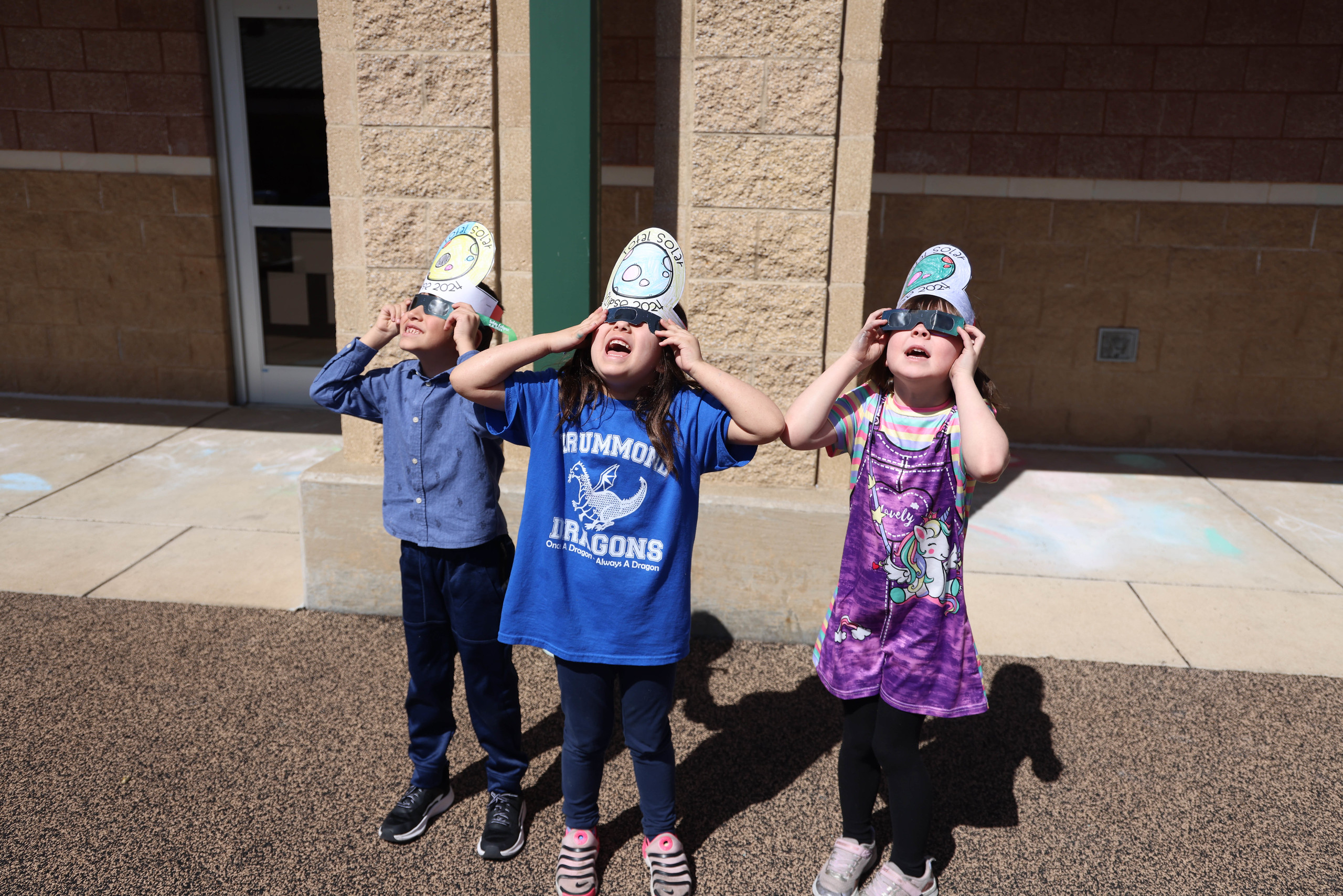 On April 8, students and staff in Pattonville waited outside with anticipation of the coming solar eclipse. Around 2 p.m., they experienced 98% totality, with the moon nearly blocking out the sun creating a dusk-like environment. Leading up to the big event, students watched a video on eye safety for viewing the eclipse, participated in a variety of eclipse-related lessons and then witnessed it in person.
On April 8, students and staff in Pattonville waited outside with anticipation of the coming solar eclipse. Around 2 p.m., they experienced 98% totality, with the moon nearly blocking out the sun creating a dusk-like environment. Leading up to the big event, students watched a video on eye safety for viewing the eclipse, participated in a variety of eclipse-related lessons and then witnessed it in person.
Students and staff who viewed the eclipse were provided with certified viewing glasses by Pattonville to ensure safe viewing. Some classes even colored paper plates to put around their glasses to provide extra protection and style. Other activities included creating eclipse hats, making ovens for cooking s’mores in and completing solar-themed word searches. Following the eclipse, former students from Remington Traditional School came back to school to help fifth grade teacher Karrie Peters dig up time capsules they made during the 2017 eclipse.
While none of Pattonville’s schools were located in complete totality, the experience was still a unique opportunity for students. Both in what they learned in class and what they experienced outside created a connection to learning rarely experienced.
A total solar eclipse occurs when the moon passes between the sun and Earth, completely covering the sun and casting a shadow on the Earth. The April 8 eclipse was called the Great North American Eclipse because it fell over more places in the U.S. than the total eclipse before and after it. Additionally, the length of the path of totality was wider and also passed over more cities and densely populated areas than the 2017 path did, which was the last time a solar eclipse was visible across the United States. The next total solar eclipse to occur in St. Louis will be in 2505.